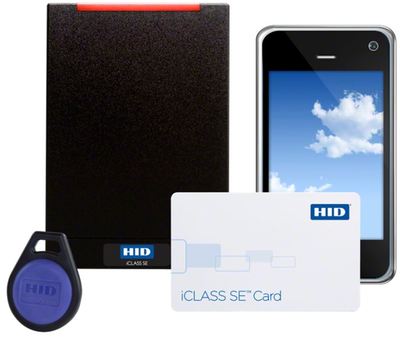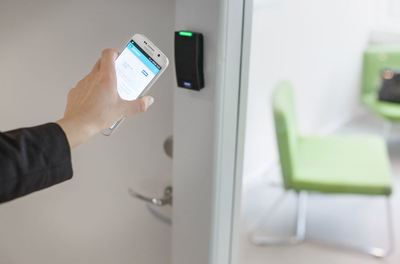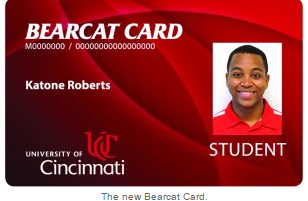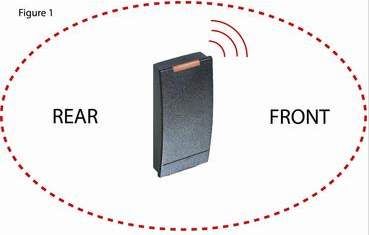|
The following tech tip is a quick overview on how proximity cards and readers work together. The proximity card reader is wired to an access control system panel. The wires carry power to the reader, and data from the reader to the panel. The Reader emits an electromagnetic field called the "excite field". This field has an elliptical shape as shown in Figure # 1 below. As Figure 1 shows, the field extends behind the reader almost as much as in front.
When a proximity card is brought within the field, the card absorbs some of the energy from the field. The card converts this field energy to electricity, which allows the electronic circuits in the card to "turn on" and transmit its number to the reader. The reader then sends the card number to the access control system panel, which then looks up in its database to see if the card number is valid and if it has rights to open that door at this time. If the card is approved, then the control panel sends a signal to the door lock to unlock for a period of time. The card data transmission distance varies with card type and reader type. Larger, more powerful readers do exist; which can energize some cards at a much farther distance. The distance at which a card will successfully transmit data to the reader is called the "Read Range". The read range is approximate and can vary depending on the details of the installation. Maximum range is achieved when the reader is mounted away from metal and cards are presented parallel to the reader face. This allows the reader field to power up the card transponder at a farther distance.
0 Comments
ColorID is offering the new Zebra HC100 wristband printer system that allows admissions staff to produce wristbands on demand with antimicrobial-coated, long-lasting material so patients can be accurately identified.
Developed specifically to meet the unique needs of healthcare providers, the reliable HC100 patient I.D. solution makes wristband printing easier and more cost effective than any available laser solution. The HC100's direct thermal printer uses easy-to-load cartridges containing the only antimicrobial coated wristbands on the market, Zebra's Z-Band wristbands.
The HC100 printer detects the wristband size (adult, pediatric or infant) and automatically calibrates its settings for optimal print quality that remain scan-able for longer than the average patient stay. The HC100 is competitively priced with an MSRP around $999. Features:
|
Categories
All
Archives
July 2020
|
WE'RE HERE TO HELP.
|
ColorID has spent over 24 years serving the ID Industry with top-level sales and support to build the ultimate trust with every customer.
|
|
|
|












